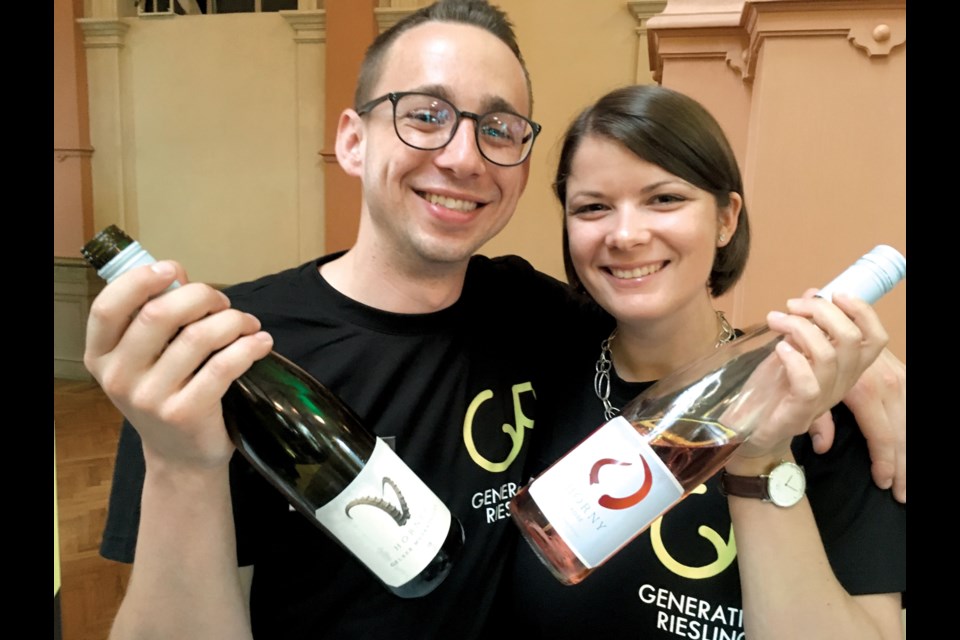A decade ago, someone had an idea that would transform the image of Germany as a staid, even rigidly traditional, very serious wine producer.
It’s just 10 years since “Generation Riesling” was launched, an anniversary just celebrated with a fair degree of enthusiasm. There were parties, tastings, a wicked dance party overlooking the Rhine at famous Roter Hang, near Nierstein and more. Not to mention a giant birthday cake cut by the Riesling Queen herself. It was all a lot of fun. But there’s a serious message here, which the Germans have managed to figure out.
“Generation Riesling,” the original, was all about celebrating smart, young winemakers coming to the fore. The one prerequisite (aside from being on top of your game) was that you had to be younger than 35. Anyone crossing that threshold is automatically retired, put out to winemaker pasture, wherever that might be.
Generation Riesling also spawned more than a few regional imitations, where groups of winemakers exchange ideas and collaborate like never before.
The current crop of Generation Riesling stars is as young as or younger than ever. And, more to the point, today several are women, suggesting that Germany is streaks ahead of the rest of the world (except perhaps Chile) when it comes to removing that notorious glass ceiling. Family owned wineries are the norm, often with vineyards handed down from generation to generation. Succession used to be gradual, and very much a male thing. No more.
The influence of youth is apparent at every turn. Although Dorothee and Karoline Gaul had studied enology and always intended to join their father in Weingut Gaul, their involvement was hastened by his illness and early passing. Several branches of the Gaul family own wineries and the two sisters, now 30 and 32, were keen to make their own mark on the 100-year-old, 18-hectare estate.
Across from the original building is now a bold, modernist cube clad in weathered steel that houses a new tasting room and cellar. The structure’s clean edges speak to the house style and now more modern character.
At Weingut Horner, Thomas Horner (aged 25) revamped the winery’s image with a clever new label design, using different horns for different tiers of wine. The look is smart, young, and fun, with, of course, special treatment for Horny Rosé.
Just two days after she returned home from winemaking studies at Geisenheim in 2013, then 23-year-old Juliane Eller told her parents she wanted to “change everything.” With their blessing, she proceeded to transform what had been a fairly traditional vineyard into the now impressive JuWel winery (a play on her own name) which, with three vintages under her belt, the young winemaker now runs with her sister. Eller says there were nine women in her class from around Germany, all with plans similar to hers.
The original London event of 2006 launched Generation Riesling with 25 young winemakers. Today there are no less than 530. And they are a force, indeed, unique to Germany. Look for wines from these rising stars to (hopefully) reach our shores soon.
My pick of the week
My Karp 2015 (Mosel Valley): Off-dry Riesling from Karp Schreiber lives up to its fun label (a play on the family name) with lively citrus notes on top followed by layers of juicy lemon-lime and stone fruit before a lingering end (BCLS $20, 91 points).
Tim Pawsey writes about wine for numerous publications and online as the Hired Belly at hiredbelly.com. Contact: [email protected].



